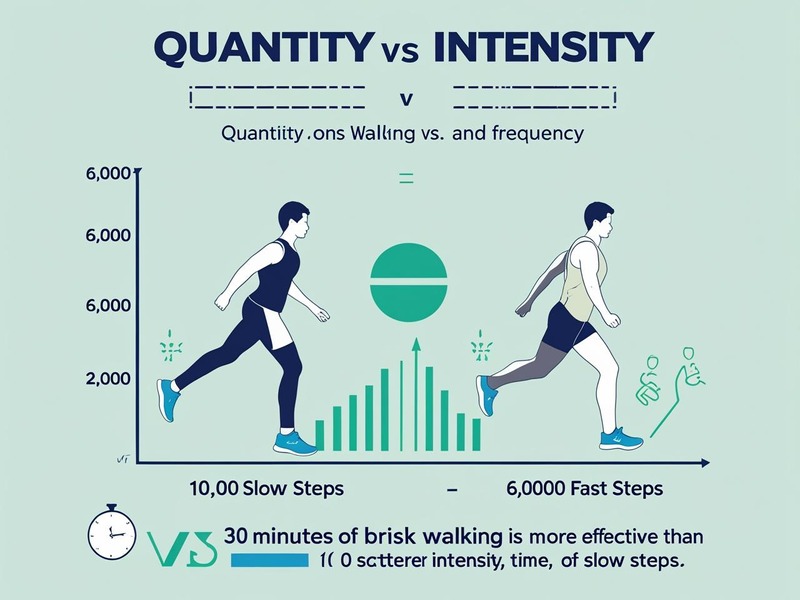The concept of “10,000 steps a day” is being touted as a worldwide health observation. The frequency of the figure is being seen on smartwatches, health applications, and pedometers. Social media influencers are advocating it, while office health contests are promoting it, and even your smartwatch is going to buzz if you have not achieved the #Goal without the magic formula. However, is this figure the reality? Is it necessary for everyone?
The Origin of the 10,000-Step Rule
Sometimes an advertising trick becomes a real thing. It is a very interesting fact that the world-famous 10,000 steps actually began life as a catchy promotional phrase for a step counter. The Manpo-kei is a pedometer that a Japanese company developed and it was marketed using the slogan “10,000 steps meter” in the early 1960s. The number was very attractive as it was a figure that was easy to remember and round. A stage managed Olympics event was the connector and also at the time, sport was getting big in Japan.
Yet, the number was not devised considering scientific grounds. It was more like a starting point to energize and excite the sedentary population not a robust research-based benchmark for exercise.

Why It Caught On
Although the 10,000 steps benchmark was a very random number chosen without any basis, it was widely embraced mostly due to its simplicity and clarity as a goal.. The fact that it was a number that was still relevant to good health could not be more relevant. For a number of people, the idea of being healthy was nothing more than measuring their steps. As wearable fitness gadgets and mHealth tools became mass products, the number has stuck.
What Science Really Says About Step Counts
In the last ten years, researchers have been looking into the possibility of achieving health benefits by walking 10,000 steps a day or even less.
Research on Daily Step Goals
A study conducted in 2019, which was published in JAMA Internal Medicine, on 16,000 senior women showed that 4,400 steps are enough to cut the risk of mortality by 70% as opposed to 2,700 steps. The increase in the level of steps is followed by the continuous decrease in the number of benefits but until about 7,500, there is a plateau, further steps do not reduce the risks to health.
Another research of 2021 from the University of Massachusetts Amherst supported this finding, quoting the number of adults who took about 7,000 steps per day as not having more than 50-70% probability of dying earlier.
From these studies, we can deduce that despite the fact that more walking is usually better, the exponential curve that describes the benefit is already laid flat long before the 10,000 steps target is reached.
Physical Activity vs. Step Count
Interestingly enough, a count of your steps is only one of the possible ways to measure the intensity of your workout. The same amount of steps may lead to different effects, cardiovascular benefits for example, if one walks quickly and the other slowly. The type of movement should also be considered when talking about habits like intensity, frequency, and posture. To give an example, 30 minutes of very fast walking may have a bigger positive impact on health than excessively slow walking of 10,000 steps, which could spread to several times throughout the day.
The Health Benefits of Walking—At Any Level
Walking still tops the list of exercises that are quite simple to do and have the potential to bring positive effects on one’s health as well as to be very friendly to the body. Even if you do not get to the 10,000 steps goal, hiking the movement in day-to-day life has several gains.
Physical Benefits
- Weight Management: Regular walking is ideal, as it helps in the burning of calories and weight loss or maintenance.
- Heart Health: Walking aids in improving blood flow, and in this way, the risk of getting heart diseases is reduced.
- Joint and Bone Strength: It not only keeps the joints flexible but also avoids osteoporosis in addition to the muscle force and density, which it contributes to.
Mental and Emotional Benefits
- Stress Reduction: Walking in nature on a regular basis has been shown to have a positive effect on mood and to be beneficial in lowering cortisol levels.
- Cognitive Function: It has been indicated that undertaking a walk may reduce age-related cognitive problems and enhance memory normatively.
- Sleep Quality: Becoming physically active corresponds to good night sleep with little or no disturbance throughout the night.

Is 10,000 Steps a Day Necessary for Everyone?
Simply put, No.
While it is a reachable target for some people, for some people, especially the lowest among you, it will be counterproductive and demotivating. These are basic factors such as age, health, occupation, and the corresponding lifestyle that determine the number of steps that are right.
Personalized Step Goals
- Beginners or Sedentary Individuals: First, keep the goal of walking 4000 to 5000 steps every day. There should be gradual increments as you become fit.
- Office Workers: At work, you can turn a normal one-to-one walk into a walking meeting. Also, consider moving throughout the day, take a walk between two buildings, and in the morning, do a short walk. In the teenage and child age group, daily walking is crucial.
- Older Adults: More than 4000 to 6000 steps a day and you will harvest all those health fruits healthily.
- Fitness Enthusiasts: Just walking 10,000+ steps a day would have only a limited, positive effect on health, whereas walks along with bodyweight exercises will ensure a consistently healthy condition of the body.
How to Set the Right Step Goal for You
Instead of striving for the magic 10,000 steps, determine which number suits your lifestyle and health the best.
Adopt the Traditional Method
- Set aside a week for the experiment in order to discover and take note of your regular activity by a pedometer or smartphone each day.
- Find the Middle: If you’re hitting 3,500 steps on average, go for 4,000–4,500 for the next week.
- Progress Gradually: Every week, increase your steps by 500–1,000 until you reach the suitable level.
Take Moving a Mile Over Miles Covered
Of course, data aids movement; however, the intensity more or less equals the quantity. Speed walking, mountain-climbing, stair climbing, or gardening are active types of doing things, which are all important to your irresistible daily movement target.
Tools to Help Track and Improve Your Steps
Various tools can be instrumental in getting into the habit of moving more and accomplishing sought-after personal results.
Step-Tracking Devices
- Wearables: These are must-haves, as they cover the basics, like, heart rate, the amount of physical activity done to date in terms of minutes, and the steps taken. Apple Watch, Fitbit, and Garmin are examples of wearable devices.
- Smartphones: Think of any iPhone with Health as the app or Google Fit on an Android phone as the pedometer that comes with it.
- Apps: Using Pacer, Strava, or MapMyWalk is useful and also authentic in respect of steps claimed.
Reminders for the Inactive
The fact of setting a reminder at some point of every hour to stand up or take a walk is not only beneficial but also good practice. Besides being an excellent idea, the application of some fitness watches can use vibration to alert you or else they may be designed to provide you with motivational messages when remaining seated for too long.
The 10,000-Step Benchmark Fallacy
Making 10,000 steps the only criterion for good physical activity may oversimplify the matter. Rather than chasing 10,000 steps, it is more important not to sit for long periods, to establish a regular movement practice, and to derive pleasure from movement.
Expert Advice
Dr. I-Min Lee, a Harvard epidemiologist, points out that “every little bit of activity is beneficial, but the more you do the better, and anything counts.”
You are better off focusing on automating diverse activities throughout your day as opposed to chasing a specific step number:
- Climb the stairs instead of using the elevator.
- Leave your car farther away from where you are going.
- Walk while immersed in audiobooks or podcasts.
- Look for walking groups or join the local walking community.
Summary: Questioning the 10,000-Step Guideline
There is no single optimal daily activity number for everyone. While 10,000 steps per day stand as the most popular goal for the majority, what should we be really focusing on is the regularity, intensity, and enjoyment of activity? The most important thing is setting movement as a daily practice, whether your figure is 6,000, 8,000, or something else?
Walking is a form of exercise that is not only predictable, but it is also open to everyone and highly beneficial for the individuals regardless of whether they hit the 10,000-step target or not.

Last Recommendations Before Starting a Walking Program
- Set goals that are achievable and progress in small steps.
- Make a mental note of your walking activity by expressing thankfulness and practicing mindfulness.
- Monitor your performance, but do it responsibly concerning your health needs.
- Combine walking with other activities for maintaining a balanced regular schedule.